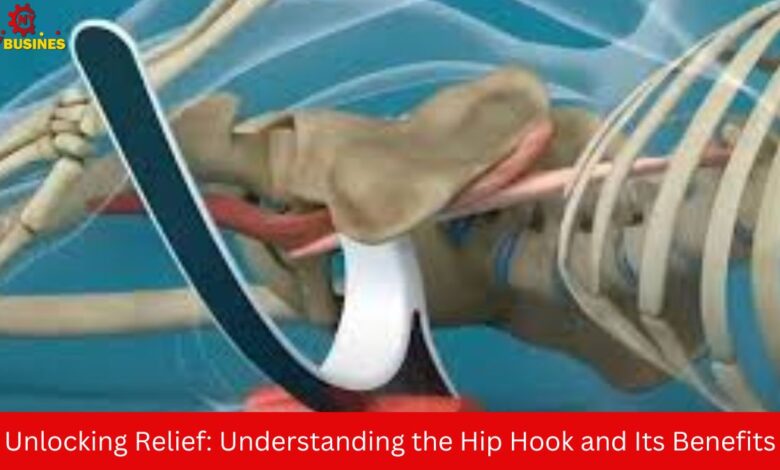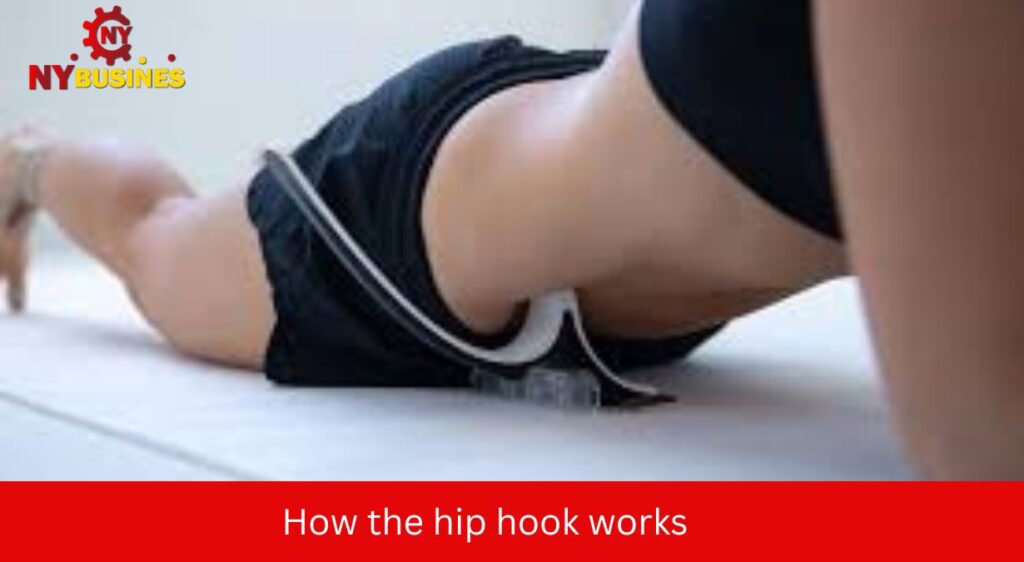Unlocking Relief: Understanding the Hip Hook and Its Benefits

The human body is a complex system of muscles, tendons and joints that work together to allow movement. When one part of this complex network is damaged, the resulting pain and discomfort can be debilitating. The hip area is often a source of pain due to tightness and imbalance of the muscles in and around the pelvis for many people. One new tool designed to address this issue is the Hip Hook. This article will explore what a hip hook is, its purpose, how it works, and its benefits.
What is a hip hook?
The Hip Hook is a specialized tool developed by Christine Koth, a physical therapist and expert in the treatment of low back pain. It is specifically designed to relieve tension from the iliacus and psoas muscles, commonly known as the hip flexor muscles. These muscles play an important role in stabilizing the spine and pelvis, but they are also strained by factors such as prolonged sitting, poor posture and repetitive movements The hip hook is unique because it is designed to target the iliacus muscle, which is often overlooked in traditional stretching and massage techniques Although many instruments and treatments focus on the soas muscle however the iliacus, which is located deep in the spine, can contribute significantly to hip pain and dysfunction The design allows users to apply specific pressure to this muscle, creating relief and releases the tension.
—
Importance of the iliacus and psoas muscles
To understand the importance of the hip hook, it is important to understand the anatomical role of the iliacus and psoas muscles. The iliacus is located in the spine, while the psoas connects the lower back to the hip bones. Together, these muscles flex the hips, allowing you to lift your legs into the squat position. These muscles stabilize the spine and pelvis, making them essential for maintaining proper posture and preventing back pain. When the iliacus and psoas muscles are tight, they can pull the spine out of alignment, causing issues like anterior spine tilts, back pain, even knee pain Tight hip flexors can also restrict your movement and affect your athletic performance. As runners, cyclists and dancers often experience stiffness in this area due to the repetition required in their activities, the hip hook helps improve body balance and overall function by putting pressure on the iliacus and soas muscles in the handling of the.—
How the hip hook works

The hip hook is easy to perform and highly effective in targeting deep hip flexor muscles. Its unique shape allows for precise positioning and pressure control, which is essential for iliacus muscle release. The device has a flat base for stability and a circular harness that fits inside the hip, where it can be positioned to apply pressure to the iliacus To use the Hip Hook, you lie on your back with the tool under your hips. You then slowly lower your body weight towards the rope, causing it to squeeze the iliacus muscle. When using hip bands, it is important to relax and breathe deeply, as this helps the muscles release their tension. The device can also be adjusted to target different areas of the iliacus and psoas muscles, depending on where you feel the most pressure. Regular hip casts can help break up adhesions, eliminate trigger points, and improve blood flow to the damaged tissues, all of which help to reduce pain and it allows them to walk better—
. Who Can Benefit from the Hip Hook?
The Hip Hook is suitable for anyone experiencing hip pain, lower back pain, or tightness in the hip flexors. It is especially beneficial for individuals who spend a lot of time sitting, as this position tends to shorten and tighten the hip flexor muscles. Office workers, drivers, and people with sedentary lifestyles may find significant relief from using the Hip Hook regularly.
Athletes and fitness enthusiasts can also benefit from the Hip Hook, as it helps release tight muscles that can impede performance and increase the risk of injury. Runners, for example, often experience tightness in their hip flexors due to the repetitive motion of lifting the legs. By incorporating the Hip Hook into their recovery routine, athletes can improve their flexibility, reduce muscle soreness, and enhance their overall performance.
Additionally, individuals recovering from surgery or injury may find the Hip Hook helpful in restoring mobility and reducing pain. However, it is always important to consult with a healthcare professional before using the tool, especially if you have a pre-existing condition or are recovering from an injury.
The Benefits of Regular Use
Incorporating the Hip Hook into your regular self-care routine can provide a range of benefits, both in terms of pain relief and overall well-being. Here are some of the key advantages of using the Hip Hook:
1. **Pain Relief**: The most immediate benefit of the Hip Hook is its ability to relieve pain in the hips, lower back, and surrounding areas. By releasing tension in the iliacus and psoas muscles, the tool helps alleviate the discomfort caused by tight hip flexors.
2. **Improved Mobility**: Tight hip flexors can restrict your range of motion and make everyday activities, such as walking or bending, more difficult. The Hip Hook helps restore flexibility to the muscles, allowing for greater ease of movement.
3. **Enhanced Posture**: When the hip flexors are tight, they can pull the pelvis out of alignment, leading to poor posture and back pain. Regular use of the Hip Hook can help realign the pelvis and improve your overall posture.
4. **Injury Prevention**: Releasing tight muscles can reduce the risk of injury, particularly for athletes and individuals who engage in repetitive movements. The Hip Hook can help prevent strains, sprains, and other injuries related to muscle imbalances.
5. **Stress Relief**: The act of releasing tension in the muscles can also have a calming effect on the nervous system. Using the Hip Hook can help reduce stress and promote relaxation, which is beneficial for both physical and mental health.
. Tips for Getting the Most Out of Your Hip Hook
To maximize the benefits of the Hip Hook, it is important to use it correctly and consistently. Here are some tips for incorporating the tool into your routine:
– **Start Slowly**: If you are new to the Hip Hook, begin with short sessions and gradually increase the time as your muscles become accustomed to the pressure.
– **Listen to Your Body**: Pay attention to how your body responds to the Hip Hook. If you experience sharp pain or discomfort, stop using the tool and consult a healthcare professional.
– **Combine with Stretching**: The Hip Hook is most effective when used in conjunction with stretching exercises. After releasing tension with the tool, follow up with gentle stretches to further improve flexibility.
– **Be Consistent**: Regular use of the Hip Hook is key to seeing lasting results. Incorporate it into your self-care routine a few times a week for optimal benefits.
—
conclusion:
The Hip Hook is another relaxing tool targeted at individuals struggling with tight hip muscles, back pain, and related issues Focusing on the commonly overlooked iliacus muscles , the hip hook helps improve balance, improves range of motion, and reduces pain . Whether you’re an athlete, an office worker, or someone looking to improve their overall well-being, hip hooks can be a valuable addition to your self-care routine
